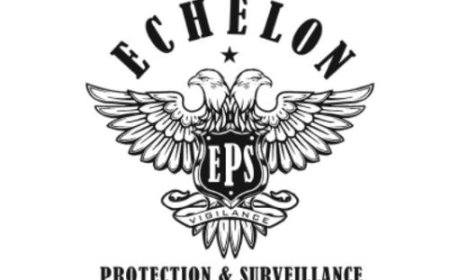How to Register a Domain Name
How to Register a Domain Name Registering a domain name is one of the most critical first steps in establishing an online presence—whether you’re launching a personal blog, a small business website, or a global e-commerce platform. A domain name serves as your digital address, the unique identifier that users type into their browsers to reach your content. It’s more than just a web address; it’s a
How to Register a Domain Name
Registering a domain name is one of the most critical first steps in establishing an online presence—whether you’re launching a personal blog, a small business website, or a global e-commerce platform. A domain name serves as your digital address, the unique identifier that users type into their browsers to reach your content. It’s more than just a web address; it’s a brand asset, a marketing tool, and a foundation for search engine visibility. Without a registered domain, your website cannot exist on the public internet.
The process of registering a domain name is straightforward, but it involves important decisions that can impact your long-term online success. Choosing the wrong domain, failing to secure key extensions, or neglecting renewal protocols can lead to lost traffic, damaged credibility, or even legal complications. This guide provides a comprehensive, step-by-step walkthrough of how to register a domain name, along with best practices, essential tools, real-world examples, and answers to frequently asked questions.
By the end of this tutorial, you will understand not only how to register a domain, but how to choose one strategically, protect it effectively, and integrate it into a sustainable digital strategy.
Step-by-Step Guide
Step 1: Define Your Purpose and Brand Identity
Before you begin searching for domain names, take time to clarify your goals. Are you creating a personal portfolio? Launching a local service business? Building a SaaS product? Your purpose will directly influence your domain choice.
Ask yourself:
- What words best describe my business, service, or content?
- Who is my target audience, and what terms would they use to find me?
- Do I want my domain to reflect my personal name, business name, or a descriptive phrase?
For example, a freelance photographer named Elena Rodriguez might choose elenarodriguez.com to build personal brand authority. A local bakery in Austin might prefer theaustinsweetbakery.com to signal location and specialty. Avoid overly generic terms like “bestpizza.com” — they’re often taken, hard to rank for, and lack memorability.
Step 2: Brainstorm Domain Name Ideas
Generate a list of 10–20 potential domain names based on your brand identity. Use a combination of:
- Your business or personal name
- Core keywords related to your offering
- Location modifiers (e.g., “nyc,” “london,” “california”)
- Descriptive terms (e.g., “shop,” “hub,” “lab,” “guide”)
Combine these elements creatively. For instance:
- GreenGardens.com
- GreenGardensNYC.com
- GrowWithGreen.com
- GreenThumbGardens.com
Use tools like Wordtune, LeanDomainSearch, or even Google’s autocomplete feature to spark ideas. Type a keyword into Google and see what suggestions appear—these reflect real user search behavior.
Step 3: Check Domain Availability
Once you have a shortlist, verify availability using a domain registrar’s search tool. Popular registrars include GoDaddy, Namecheap, Google Domains (now Squarespace Domains), and Hover.
Enter each domain idea into the registrar’s search bar. The system will instantly tell you if the domain is available, along with pricing for different extensions (.com, .net, .org, .io, etc.).
Pay attention to:
- Top-level domain (TLD): .com remains the gold standard for credibility and memorability. If .com is taken, consider .co, .io, or .ai for tech brands, or .shop, .store for e-commerce.
- Hyphens and numbers: Avoid them. Domains like “my-site-123.com” are harder to remember and appear less professional.
- Misspellings: Don’t register “goggle.com” instead of “google.com.” This is not only unethical but can lead to legal action under trademark law.
If your preferred domain is taken, look for alternatives using the registrar’s suggestions. Sometimes, slight variations like adding “get,” “try,” or “my” can yield available options (e.g., getnoted.com instead of noted.com).
Step 4: Choose a Reputable Domain Registrar
Not all registrars are equal. Select one based on transparency, customer support quality, pricing structure, and additional features like privacy protection and DNS management.
Here’s what to look for:
- Transparent pricing: Beware of low introductory rates that skyrocket at renewal. Look for the “renewal price” clearly displayed.
- Free WHOIS privacy: This hides your personal contact information from public databases, reducing spam and identity risks.
- Easy DNS management: You’ll need to point your domain to your web host. A clean interface makes this easier.
- No upsells: Avoid registrars that bombard you with hosting, email, or SSL certificate offers during checkout.
Namecheap is often recommended for its straightforward pricing and free WHOIS privacy. Google Domains (now integrated into Squarespace) offers clean UX and reliable infrastructure. Hover is excellent for users who value simplicity and customer experience.
Step 5: Complete the Registration Process
Once you’ve selected your domain and registrar, proceed to checkout. The registration process typically involves:
- Creating an account with the registrar (use a strong, unique password).
- Entering accurate contact information (this becomes part of the WHOIS database unless privacy protection is enabled).
- Selecting the registration period (1 year is standard; multi-year registration offers discounts and reduces renewal risk).
- Enabling WHOIS privacy protection (always do this unless you have a specific reason not to).
- Choosing additional services (only select those you truly need, such as email hosting or SSL certificates).
- Completing payment via credit card, PayPal, or other accepted methods.
After payment, you’ll receive a confirmation email. Keep this for your records. Your domain is now registered, but it won’t be active until you connect it to a web host.
Step 6: Configure DNS Settings
Domain registration alone doesn’t make your website live. You must point your domain to a web hosting server using DNS (Domain Name System) records.
Most registrars provide a DNS management panel. Here’s what to do:
- Log in to your registrar’s dashboard.
- Find the DNS or Nameserver settings for your domain.
- Replace the default nameservers with those provided by your web host (e.g., Cloudflare, Bluehost, SiteGround, or AWS).
- Save changes.
Propagation—the time it takes for DNS changes to update globally—can take from a few minutes to 48 hours. During this period, your website may not be accessible to everyone. Be patient.
Step 7: Set Up Email and Security
Once your domain is live, consider setting up a custom email address (e.g., contact@yourdomain.com). This enhances professionalism and trust.
You can use:
- Google Workspace (now Google Workspace)
- Microsoft 365
- ProtonMail for privacy-focused users
- Or your hosting provider’s built-in email service
Additionally, install an SSL certificate to enable HTTPS. Most hosts now offer free SSL via Let’s Encrypt. Ensure your site loads with “https://” and displays a padlock icon in browsers.
Step 8: Renew and Monitor Your Domain
Domain registrations are not permanent. They expire annually (or after your chosen term). Failure to renew can result in your domain being auctioned off or snatched by a domain squatter.
Best practices:
- Enable auto-renewal through your registrar.
- Set calendar reminders for renewal dates 30, 15, and 7 days in advance.
- Keep your contact information updated—registrars will send renewal notices to the email on file.
- Consider registering for multiple years (up to 10) to reduce renewal frequency and lock in pricing.
Some registrars offer domain locking, which prevents unauthorized transfers. Enable this feature to protect against hijacking.
Best Practices
Choose .com When Possible
The .com extension is the most trusted and recognizable domain type. Studies show users are more likely to remember, type, and trust .com domains over alternatives. If your desired .com is unavailable, evaluate whether a .co, .io, or .ai variant aligns with your brand’s identity and audience expectations. Avoid obscure TLDs like .xyz or .guru unless they serve a specific niche purpose.
Keep It Short, Memorable, and Brandable
Optimal domain names are 6–14 characters long. Think of brands like Slack, Zoom, Notion, or Airbnb. These are unique, easy to spell, and don’t require explanation. Avoid compound words that are hard to pronounce or spell (e.g., “ezyshoppe.com”).
Test your domain name by saying it aloud. Can someone hear it once and spell it correctly? If not, reconsider.
Avoid Trademark Infringement
Registering a domain that matches a registered trademark (e.g., “nikeoutlet.com” or “applerepairhelp.com”) can lead to legal action under the Anticybersquatting Consumer Protection Act (ACPA) or UDRP (Uniform Domain-Name Dispute-Resolution Policy). Always search the USPTO database or WIPO’s trademark search tool before registering.
Secure Multiple Variations
To protect your brand, consider registering common misspellings and alternative TLDs. For example, if your domain is techflow.com, also register:
- techflow.net
- techflow.org
- techflow.co
- teckflow.com
- techflow.io
This prevents competitors or scammers from capitalizing on user typos. You can redirect these domains to your primary site using URL forwarding.
Use Hyphens and Numbers Only as a Last Resort
Domains like “my-website-2024.com” are harder to remember, harder to communicate verbally, and often associated with spammy or low-quality sites. If you must use a hyphen, ensure it’s between distinct words (e.g., “my-website.com” is better than “mywebsite-2024.com”). Numbers are acceptable only if they’re part of your brand identity (e.g., “247support.com”).
Plan for International Audiences
If your audience spans multiple countries, consider country-code top-level domains (ccTLDs) like .uk, .ca, .au, or .de. However, avoid using a ccTLD if your business is global—Google treats ccTLDs as geographically targeted, which may limit international visibility. Instead, use a .com domain with hreflang tags and geo-targeting in Google Search Console.
Don’t Overlook Mobile Optimization
Many users access websites via mobile devices. Ensure your domain name is easy to type on a touchscreen. Avoid long strings, confusing letter combinations, or homophones (e.g., “you” vs. “u”).
Register for Multiple Years
Renewal lapses are one of the leading causes of website downtime and brand loss. Registering for 2–5 years upfront reduces administrative burden and protects against price hikes or accidental expiration. Many registrars offer discounts for multi-year commitments.
Enable Domain Privacy and Locking
WHOIS privacy hides your name, address, phone number, and email from public directories. Without it, your contact info is accessible to spammers, scammers, and competitors. Always enable it during registration.
Domain locking prevents unauthorized transfers. If someone gains access to your registrar account, they could transfer your domain to another registrar. Locking adds an extra layer of security.
Tools and Resources
Domain Name Generators
These tools help brainstorm ideas based on keywords:
- LeanDomainSearch (by Namecheap): Generates available domains by combining keywords.
- BusinessNameGenerator.com: Ideal for startups seeking brandable names.
- DomainWheel: Offers suggestions with real-time availability checks.
- WordStream’s Free Domain Name Generator: Integrates SEO keyword data.
Domain Availability Checkers
Use these to verify if your desired domain is registered:
- GoDaddy Domain Search
- Namecheap Domain Checker
- InstantDomainSearch.com: Fast, clean interface with bulk search capability.
- Whois.com: For checking ownership details of existing domains.
Trademark Search Tools
Ensure your domain doesn’t violate intellectual property:
- USPTO TESS Database (United States)
- WIPO Global Brand Database (International)
- EUIPO TMview (European Union)
DNS and Hosting Management Tools
Once registered, manage your domain’s technical settings with:
- Cloudflare: Free DNS management, CDN, and security features.
- Google Domains (Squarespace): Simple interface for DNS and email.
- Cloudns.net: Advanced DNS control with API access.
Domain Auction and Backorder Services
If your desired domain is taken but may expire, use:
- GoDaddy Auctions
- NameJet
- DropCatch.com
These platforms allow you to place bids on expiring domains or set up alerts for when a domain becomes available.
Domain Valuation Tools
For investors or those considering buying an existing domain:
- Estibot
- GoDaddy Domain Appraisal
- DomainIndex.com
These estimate market value based on length, TLD, keyword popularity, and historical sales data.
Real Examples
Example 1: Small Business – “Bloom & Grow Florist”
A local florist in Portland, Oregon, wanted to establish an online presence. Their initial idea was “bloomandgrowflorist.com,” but it was too long and difficult to remember.
After testing alternatives, they chose bloomandgrowpdx.com, where “pdx” is the common abbreviation for Portland. The domain was available, concise, and location-specific. They registered it with Namecheap, enabled WHOIS privacy, and set up auto-renewal for three years.
They then connected it to a WordPress site hosted on SiteGround. A custom email (hello@bloomandgrowpdx.com) was created via Google Workspace. Within two weeks, their website appeared in local search results, and customer inquiries increased by 40%.
Example 2: Tech Startup – “Nexa AI”
A startup developing AI-powered analytics tools wanted a modern, tech-forward domain. Their preferred name, “nexa.ai,” was available and aligned with industry trends. They registered it through Hover, which offered clean DNS controls and no upsells.
To protect their brand, they also registered:
- nexa.ai
- nexa.io
- nexa.tech
- getnexa.com
All were redirected to the primary .ai domain. They used Cloudflare for performance and security, enabling SSL, DDoS protection, and caching. Their domain became a key part of their investor pitch, reinforcing professionalism and technical credibility.
Example 3: Personal Brand – “Alex Rivera – Writer”
A freelance writer sought to build a portfolio site. He considered “alexriverawriter.com,” but it was too long. He tested “alexrivera.co” and found it available. He chose the .co extension because it’s widely accepted for personal brands and startups.
He registered it with Squarespace, which offered integrated website building. He added a custom email and linked it to his LinkedIn profile. His domain became the central hub for his online identity, helping him land high-profile clients.
Example 4: Failed Registration – “BestCoffeeShop.com”
A new café owner attempted to register “bestcoffeeshop.com.” The domain was taken by a domain squatter who was asking $15,000 for it. The owner had no legal recourse since “best coffee shop” is a generic phrase.
They pivoted to mountainbeancafe.com, which was available, unique, and reflected their location and specialty. They later acquired “bestcoffeeshop.net” as a redirect. The new domain became a brand asset, and their website ranked for “coffee shop in Boulder” within six months.
FAQs
How much does it cost to register a domain name?
Domain registration typically costs between $10 and $20 per year for common TLDs like .com, .net, or .org. Premium domains (popular keywords or brandable names) can cost hundreds or thousands. Some registrars offer first-year discounts, but always check the renewal price. Country-code domains (e.g., .co.uk) may vary in pricing depending on the registry.
Can I register a domain name without hosting?
Yes. You can register a domain name independently of web hosting. The domain simply points to a placeholder page until you connect it to a hosting provider. Many people register domains first and build their site later.
How long does a domain registration last?
Registrations can be purchased for 1 to 10 years. Most users choose 1 or 2 years initially. Multi-year registration is recommended to avoid lapses and lock in pricing.
What happens if I don’t renew my domain?
If you don’t renew, your domain enters a grace period (usually 0–45 days), during which you can still renew it, often with a late fee. After that, it enters a redemption period (about 30 days), where renewal is possible but expensive. If still not renewed, the domain is deleted and becomes available for public registration—often snapped up by domain investors.
Can I transfer my domain to another registrar?
Yes. You can transfer your domain to another registrar after 60 days of initial registration or transfer. You’ll need an authorization code (EPP code) from your current registrar and must ensure WHOIS privacy is disabled during the process. Transfers typically take 5–7 days.
Is it better to register a domain with my web host or a separate registrar?
It’s often better to use a separate, reputable registrar (like Namecheap or Hover) rather than your web host. This gives you more control and flexibility. If you later want to switch hosts, you won’t be locked in. Some hosts bundle domains with hosting, which can make future changes more complicated.
Can I buy a domain name forever?
No. Domain names are leased, not owned. You can register for up to 10 years at a time, but you must renew periodically. There is no permanent ownership model for domain names under current ICANN regulations.
Do I need to register multiple TLDs?
If you’re building a brand, yes. Registering common TLDs (.com, .net, .org) and common misspellings protects your brand and prevents competitors from capitalizing on your reputation. For personal use or small projects, one domain may suffice.
Can I use a domain name with special characters or emojis?
No. Domain names can only contain letters (a-z), numbers (0-9), and hyphens (-). They cannot include spaces, underscores, or emojis. Internationalized domain names (IDNs) can use non-Latin scripts (e.g., Chinese, Arabic), but these are encoded in Punycode and may not display correctly in all browsers.
How do I know if a domain is trademarked?
Search the USPTO database (for U.S. trademarks) or WIPO’s global trademark database. If a business has a registered trademark in your industry or region, using a similar domain could lead to legal action—even if you didn’t intend to infringe.
Does domain age affect SEO?
Domain age is a minor factor in SEO. While older domains may have accumulated backlinks and authority, Google primarily ranks content quality, user experience, and technical performance. A new domain with excellent content can outrank an older one quickly.
Conclusion
Registering a domain name is more than a technical task—it’s a strategic decision that shapes your digital identity. The right domain enhances credibility, improves memorability, supports SEO, and protects your brand. By following the step-by-step guide outlined in this tutorial, you can navigate the registration process confidently and avoid common pitfalls.
Remember: choose a name that reflects your brand, secure the .com if possible, enable privacy and auto-renewal, and always verify trademark conflicts. Use reliable registrars and tools to streamline the process. Don’t rush—your domain is a long-term asset.
Once registered, your domain becomes the foundation of everything else: your website, email, social profiles, marketing campaigns, and customer trust. Treat it with the care it deserves. A well-chosen domain doesn’t just get people to your site—it makes them want to stay.
Start today. Choose wisely. Register with confidence.

























